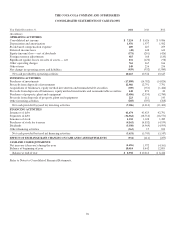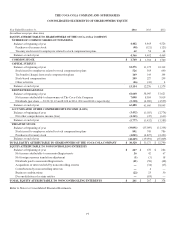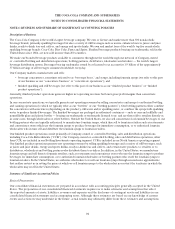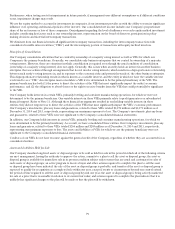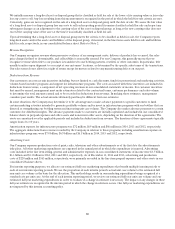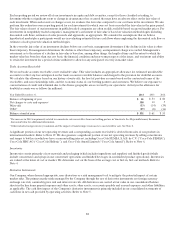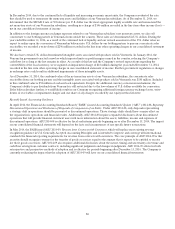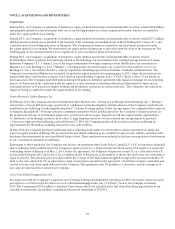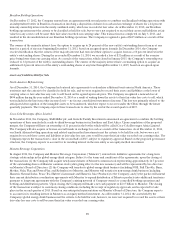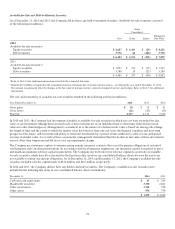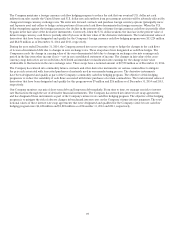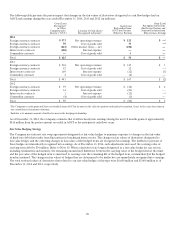Coca Cola 2014 Annual Report Download - page 88
Download and view the complete annual report
Please find page 88 of the 2014 Coca Cola annual report below. You can navigate through the pages in the report by either clicking on the pages listed below, or by using the keyword search tool below to find specific information within the annual report.86
In December 2014, due to the continued lack of liquidity and increasing economic uncertainty, the Company reevaluated the rate
that should be used to remeasure the monetary assets and liabilities of our Venezuelan subsidiary. As of December 31, 2014, we
determined that the SICAD 2 rate of 50 bolivars per U.S. dollar was the most appropriate legally available rate and remeasured the
net monetary assets of our Venezuelan subsidiary, resulting in a charge of $146 million recorded in the line item other income (loss) —
net in our consolidated statement of income.
In addition to the foreign currency exchange exposure related to our Venezuelan subsidiary’s net monetary assets, we also sell
concentrate to our bottling partner in Venezuela from outside the country. These sales are denominated in U.S. dollars. During the
year ended December 31, 2014, as a result of the continued lack of liquidity and our revised assessment of the U.S. dollar value we
expect to realize upon the conversion of Venezuelan bolivars into U.S. dollars by our bottling partner to pay our concentrate sales
receivables, we recorded a write-down of $296 million recorded in the line item other operating charges in our consolidated statement
of income.
We also have certain U.S. dollar denominated intangible assets associated with products sold in Venezuela. In January 2014, the
Venezuelan government enacted a new law which imposes limits on profit margins earned in the country, reducing the Company’s
cash flows for as long as the law remains in effect. As a result of this law and the Company’s revised expectations regarding the
convertibility of the local currency, we recognized an impairment charge of $18 million during the year ended December 31, 2014,
recorded in the line item other operating charges in our consolidated statement of income. Further government regulation or changes
in exchange rates could result in additional impairments of these intangible assets.
As of December 31, 2014, the combined value of the net monetary assets of our Venezuelan subsidiary, the concentrate sales
receivables from our bottling partner and the intangible assets associated with products sold in Venezuela was $180 million. Included
in this combined value is $52 million of cash and cash equivalents. Despite the additional currency conversion mechanisms, the
Company’s ability to pay dividends from Venezuela is still restricted due to the low volume of U.S. dollars available for conversion.
If the bolivar devalues further, it would likely result in our Company recognizing additional foreign currency exchange losses, write-
downs of receivables or impairment charges and our share of any charges recorded by our equity method investee.
Recently Issued Accounting Guidance
In April 2014, the Financial Accounting Standards Board (“FASB”) issued Accounting Standards Update (“ASU”) 2014-08, Reporting
Discontinued Operations and Disclosures of Disposals of Components of an Entity. Under ASU 2014-08, only disposals representing
a strategic shift in operations should be presented as discontinued operations. Those strategic shifts should have a major effect on
the organization’s operations and financial results. Additionally, ASU 2014-08 requires expanded disclosures about discontinued
operations that will provide financial statement users with more information about the assets, liabilities, income and expenses of
discontinued operations. ASU 2014-08 is effective for fiscal and interim periods beginning on or after December 15, 2014. The impact
on our consolidated financial statements will depend on the facts and circumstances of any specific future transactions.
In May 2014, the FASB issued ASU 2014-09, Revenue from Contracts with Customers, which will replace most existing revenue
recognition guidance in U.S. Generally Accepted Accounting Principles and is intended to improve and converge with international
standards the financial reporting requirements for revenue from contracts with customers. The core principle of ASU 2014-09 is that
an entity should recognize revenue for the transfer of goods or services equal to the amount that it expects to be entitled to receive
for those goods or services. ASU 2014-09 also requires additional disclosures about the nature, timing and uncertainty of revenue and
cash flows arising from customer contracts, including significant judgments and changes in judgments. ASU 2014-09 allows for both
retrospective and prospective methods of adoption and is effective for periods beginning after December 15, 2016. The Company is
currently evaluating the impact that the adoption of ASU 2014-09 will have on our consolidated financial statements.


